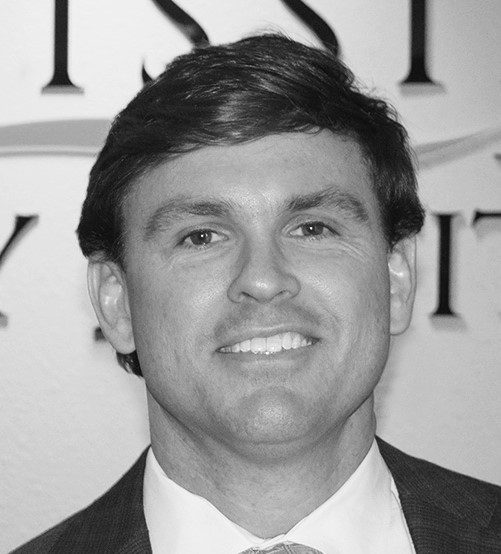
Patrick Sullivan
- The state should consider policy initiatives that emphasize workforce success with academic success and prioritize programs most needed by the industry sectors that provide the best jobs and highest quality growth opportunities.
Dear State and Community Leaders:
Significant progress has been made in our state’s workforce development efforts in the last three years. Improved collaboration among policymakers, educators, agencies and the business community has resulted in a more coordinated and focused effort than the disjointedness of years past, but much work remains.
Among the many challenges, perhaps the greatest opportunity to advance more Mississippians and to enhance the state’s competitiveness is to better align education with workforce needs. Most state funded workforce education and training in Mississippi takes place at public educational institutions – high schools, community colleges and universities. An analysis of public education students and workforce outcomes reveals a massive misalignment between what the education system supplies and what the modern labor market demands today. For the majority of students, the results of this misalignment are poor workforce outcomes.
Looking at outcomes of public high school graduates, data indicates nearly a third are not continuing their education at a Mississippi public college or university. While some go to a private institution or out of state, most of these students are entering the workforce immediately after high school with just over half of those graduates working in state six years later, and at well below average pay. Another near-third of public high school graduates begin post-secondary education at a community college or university but fail to complete or earn a degree before entering the workforce. Of these, data indicates a significantly higher percentage are employed six years after high school graduation, but earnings are also well below average. Therefore, public data suggests as many as 60% of public high school graduates are entering Mississippi’s workforce with either no education after high school or an incomplete college education with poor workforce outcomes for the majority of these students working in Mississippi.
For the public high school graduates who go on to complete a post-secondary program at an in-state community college and/or a university, data indicates a majority are completing a degree or certificate program that carries little value in the eyes of industry sectors and employers offering high-pay opportunities. As would be expected, the data indicates results for most graduates with low-demand degrees are low-pay jobs for those working in Mississippi three years after graduation.
For example, in looking at community college graduates over a five-year period, the largest degree category by far is Liberal Arts, General Studies, and Humanities. Of the graduates with these program degrees who enter the workforce and do not continue their education, about 1900/year, data indicates just 63% were working in Mississippi three years later at a median income of $24,400. In contrast, in high-demand fields like nursing or industrial maintenance/mechanics, percentages employed in Mississippi three years later and median incomes are 81% and $52,600 for nursing and 87% and $58,000 for industrial maintenance/mechanics. There is clearly an oversupply of liberal arts graduates and an undersupply of more specialized, technical workers in the workforce.
For 4-year degrees, a number of degree programs stand out in the data in terms of helping graduates access high-income jobs. A few examples are engineering, computer and information sciences, nursing/healthcare professions and construction management. Median income of graduates from one of these programs who were working in Mississippi three years after graduation are well above average, ranging from $51,000-$75,000 in the data set. We also know job demand exceeds supply of qualified workers in these critical areas in Mississippi and across the country. In contrast, the data indicates far too many students are graduating in degree programs like English literature, biology, general psychology, performing arts, political science, social work, history, anthropology, journalism, exercise science, interdisciplinary studies, and liberal arts. Just in this set of programs, about 3400 students graduated per year in the five-year period, and data indicates median incomes for those working in Mississippi three years later was well below average, often below $30,000/year.
The data tells an incomplete story, but it seems to clearly indicate Mississippi’s public education system and state funding models do not currently factor workforce success along with academic success in prioritizing programs and spending. The data does not say a student with only a high school degree or a low-value college degree can’t be successful because we know some are. The data simply says the majority of students in these categories either don’t work or are earning much lower incomes than their peers, and the number of Mississippians in these categories is too many.
The question is, as a state, what should we do with this information? A thoughtful public policy-based response to these deficiencies could result in greater public investment in high-workforce-value education by transitioning public education spending away from many programs that we know are resulting in poor workforce outcomes.
The Career Coach program was a positive step and created primarily to steer more students into pathways both in high school and after high school that are associated with known, good career opportunities. This program can be a needle mover, but goals should be set and measured annually to ensure success. The Career Coach program and some other pre-existing successful efforts in education scattered around the state are critical means to better guiding students, but new education funding strategies could play an even bigger role in increasing high-value education and improving eventual workforce outcomes for students.
From a simple view, the public education system does what it’s paid to do and, largely, does a good job at it. The biggest problem may be, current funding models encourage or necessitate educational institutions to prioritize high-volume but lower-value education over high-cost, high-value education or training, in terms of workforce needs.
In the examples of degree programs above, teaching history, literature or liberal arts is certainly both easier and less expensive than teaching students nursing, industrial mechanics or construction management. Do current funding models pay educational institutions the same amount regardless of teaching/training costs and workforce need/outcomes? If so, through policy and appropriations changes, there is a great opportunity to financially encourage state educational institutions to ramp up production of high workforce-value education and training and to steer public dollars away from programs with poor investment returns in workforce terms, both from the student and state perspective.
Although it should be advised to every student, having every student enter a high-demand program is neither realistic nor necessary, but growth in these areas is a must to improve education-to-workforce outcomes. The state should consider policy initiatives that emphasize workforce success with academic success and prioritize programs most needed by the industry sectors that provide the best jobs and highest quality growth opportunities. These are manufacturing, information technology, transportation, construction, energy and healthcare.
The highest-paying companies and jobs in Mississippi are largely not seeking liberal arts graduates. Instead, specialized operators, technicians, healthcare professionals, IT experts, engineers, and many more professions are the occupations in the highest demand and offering the greatest opportunity to earn above average incomes.
Obviously, policies that encourage more Mississippians to enter and complete post-secondary education of some type are very important and needed. At the same time, policies must also steer more students into the programs that will give them a higher opportunity of success and match the needs of Mississippi’s economy.
The State Workforce Investment Board, the majority of which are business sector representatives, has recommended the following:
The State Workforce Investment Board recommends the Mississippi Legislature work alongside AccelerateMS to consider ways to better allocate appropriations provided across the public education system towards a constant goal of better linking education to careers and economic needs. By using available data and more in-depth analysis, the state can increase its competitiveness, drive more Mississippians into high quality careers, strengthen communities, and help drive business growth and productivity by starting a long-term commitment to prioritizing education and training leading to good jobs. Currently, some education/training programs result in poor workforce outcomes while some others result in great workforce outcomes. Utilizing available analytical tools will allow leaders and appropriators to consider ways to transition more resources into high-value programs in greater demand.
Such an initiative cannot be accomplished overnight, but there is a great opportunity for Mississippi to be the leading state in urgently prioritizing education that translates to a greater chance at success once students are in the workforce. An intentional, measured effort would put more Mississippians on a path for good opportunity, help our businesses grow, and attract even more attention to Mississippi as a place to do business.
Sincerely,
Patrick Sullivan
Chairman, State Workforce Investment Board









